Ultraviolette Automotive is a Bengaluru-based start-up that has recently launched the F77 – India’s first indigenous all-electric sports bike. Designed and developed in Bengaluru, with the backing of industry heavyweights like the TVS Motor Company, the F77 features some interesting technological features that include a set of high-density lithium-ion battery packs, which are much lighter than conventional ones. Here are five things you need to know about the new Ultraviolette F77.
Overview
The F77 was always conceived as a performance-biased electric motorcycle and not a humdrum commuter. There are, in fact, quite a few manufacturers that have launched all-electric scooters with a greater emphasis on everyday utility and range but not on outright performance. This is where Ultraviolette distinguishes itself by launching a 200cc-250cc motorcycle-rivalling, all-electric model. The focus is clearly on offering a similar experience to that of a petrol-powered motorcycle, not only in terms of performance but also on factors such as ride and handling. We were, in fact, the only automobile publication to ride the final prototype version a few months back, and going by the specifications, the F77 looks quite promising
Technology
The F77 is powered by a 25kW motor that’s nestled within a bespoke frame and develops 33.5hp at 2,250rpm, along with 90Nm of torque. Power is sent to the rear wheel via an X-ring chain drive with a 14T sprocket at the front and a 46T sprocket on the rear wheel.
Those are pretty impressive figures and, as is the case with most electric vehicles, torque is available literally on tap. Claimed performance figures for an e-vehicle are hence ...er ...electrifying – 0-60kph comes up in 2.5sec, while the 100kmph mark will fly by in 7.5sec. The bike will go on to hit its top speed of 147kph and that’s quick enough for our roads. There are three ride modes – Eco, Pro and Insane – with the last one offering maximum performance, albeit at the cost of the lowest possible range. Although, Ultraviolette says their battery technology has ensured that the F77 manages a realistic range in spite of the performance on offer.
The F77 will feature a raft of connected technologies that can be accessed via an iOS and Android based smartphone app. A 5.0-inch TFT instrument panel acts as the interface, with buttons on the switchgear to operate various functions. A touchscreen panel, like on the Ather 450, would’ve added to the cost, says Ultraviolette. Other features on the F77 include geofencing, automatic battery compartment ejection, remote start-stop, error reporting, and a nine-axis IMU for ride analysis.
Batteries
At the touch of a button, a stack of three removable lithium-ion batteries, sitting inside a tray, pop out of the fairing in a rather captivating sci-fi fashion. Each battery pack is IP67-rated and weighs only 8.5kg; Ultraviolette says it is one of the most power-dense batteries in the world and patents for the same have been filed. The batteries alone contribute to major weight savings and that explains why the e-motorcycle has an impressive 158kg kerb weight. Ultraviolette says that they’ve tested the battery packs for durability while riding over rough terrain. The batteries come with their own processor, memory, wireless communication an GPS module.
The batteries offer a combined range of 130-150km on a single charge and it takes 5 hours to brim it with juice, while a fast charger, sold separately, drops charging time to just 1.5 hours. In addition, Ultraviolette will also sell you a 3kW portable ‘powerbank’ that can be carried in a backpack. It can charge the batteries up to 80 percent in 50 minutes, which should help alleviate range anxiety concerns. For those lookin to charge the batteries at home, a special charging pod, sold seprately,
Chassis and suspension
Besides the large electric motor and battery housing within the chassis, the rest of the F77’s components are similar to what you’d see on a conventional, petrol-powered motorcycle. There's a USD fork at the front and a preload adjustable monoshock at the rear. The wheels are cast alloy, designed by the Ultraviolette team. Even the brakes are the same Bybre units as on the KTM RC 390.
Availability
The Ultraviolette F77 is available in three variants – Lightning, Shadow and Laser – and customers can choose to fit a variety of accessories, which includes panniers. The F77 will set you back by Rs 3-3.25 lakh on-road. Although bookings are open, deliveries will only commence in October 2020, because there's still some fine tuning left to do. Components such as the switchgear, for instance, have not been finalised and the company wants to ensure that customers receives a glitch-free motorcycle.
For those who want to know more about what the e-motorcycle is like to ride on a racetrack, we'll be live with our review tomorrow. Stay tuned.
Also see:
Ultraviolette F77 image gallery


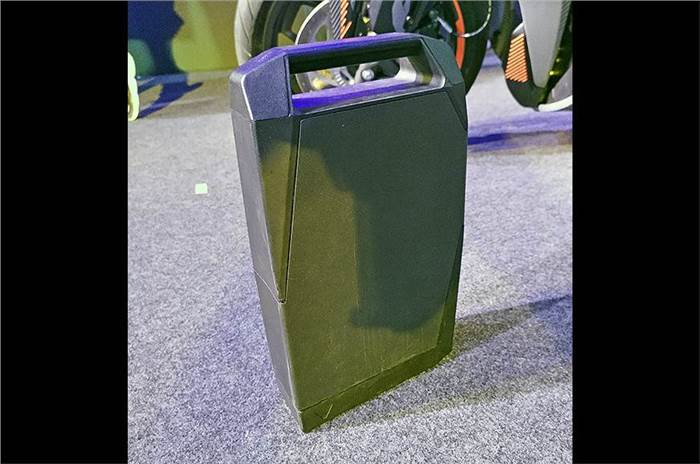
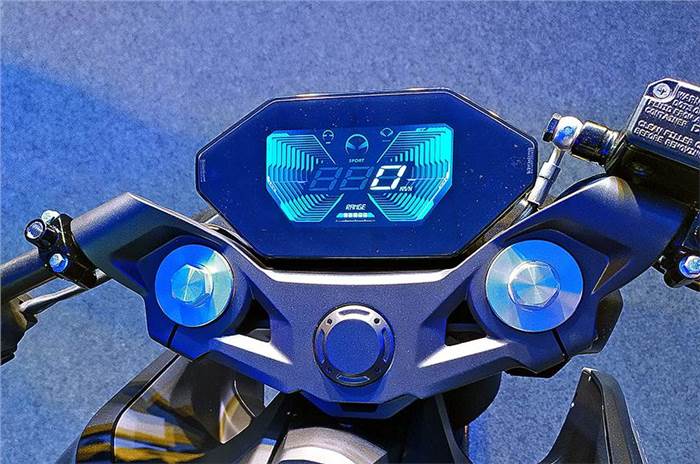


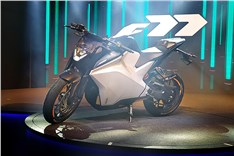


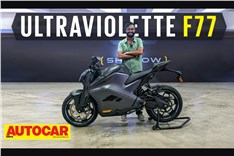
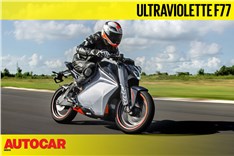
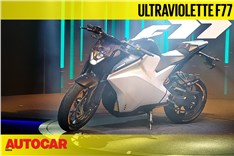

Comments
Member Login
Personal Details
No comments yet. Be the first to comment.